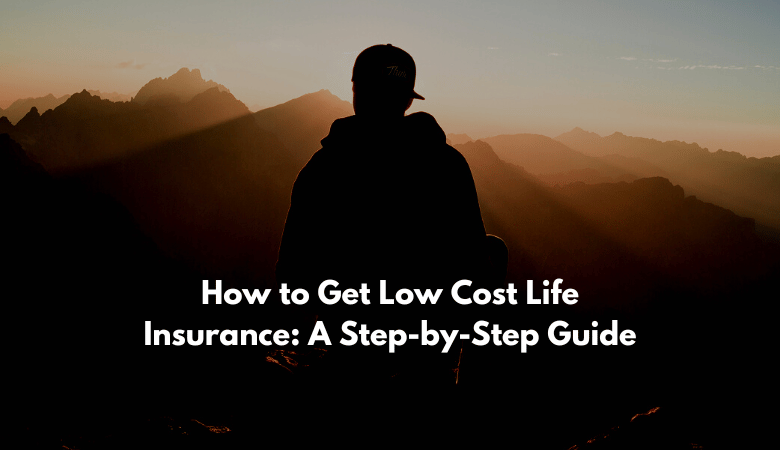How to Get Low Cost Life Insurance: A Step-by-Step Guide

Are you tired of expensive life insurance premiums? Do you feel like getting affordable coverage is out of reach? Look no further! In this step-by-step guide, we will show you how to get low cost life insurance without sacrificing quality or coverage. Whether you’re a young adult just starting out, or a seasoned professional looking for ways to save on your policy, we’ve got tips and tricks that can help. So sit back, relax, and read on to learn how to secure the life insurance protection you need at a price that won’t break the bank.
What is Life Insurance?
Most people know that life insurance is a way to financially protect your loved ones in the event of your death. What many don’t realize, however, is that life insurance can be a very affordable way to do this. In fact, if you follow the steps outlined in this guide, you can get low cost life insurance that will give you peace of mind without breaking the bank.
So, what is life insurance? Life insurance is a contract between you and an insurance company in which you agree to pay premiums (usually on a monthly or annual basis) in exchange for the insurer agreeing to pay out a lump sum benefit to your designated beneficiaries in the event of your death. The amount of coverage you need will depend on factors like your age, health, lifestyle, and financial situation.
There are two main types of life insurance: term life insurance and whole life insurance. Term life insurance provides coverage for a set period of time (usually 10-30 years), while whole life insurance provides coverage for your entire lifetime. Term life insurance is generally more affordable than whole life insurance, but it does not build cash value like whole life does. This means that with term life insurance, you are only paying for the pure protection element of the policy.
Now that you know what life insurance is and how it works, let’s take a look at how you can get low cost life insurance…
How Much Life Insurance Do You Need?
When it comes to life insurance, there is no one-size-fits-all answer. The amount of coverage you need depends on a variety of factors, including your age, health, lifestyle, and dependent status.
To calculate how much life insurance you need, start by estimating your annual income and subtracting any debts and expenses that would be paid off in the event of your death. Then, add up your final expenses, including funeral costs and any outstanding debts or bills. Finally, factor in the cost of replacing your lost income for your family members or dependents.
Keep in mind that your life insurance needs can change over time. As you get older, your debt decreases and your financial responsibilities change. Review your life insurance coverage every few years to make sure it still meets your needs.
The Different Types of Life Insurance
There are many different types of life insurance available on the market, and each has its own set of benefits and drawbacks. Here is a brief overview of the most common types of life insurance:
Term life insurance is the most basic and straightforward type of policy. It provides coverage for a set period of time, typically 10, 20, or 30 years. If you die during that time frame, your beneficiaries will receive the death benefit. If you outlive the term, the policy expires and you (and your beneficiaries) get nothing. Term life insurance is the most affordable option, but it does not build up any cash value.
Whole life insurance is the original life insurance policy type. It remains in force until your death, as long as you continue to pay the premiums. Whole life policies also have a cash value component that grows over time, providing a source of financial security in retirement or if you need to access funds for other purposes before death. The downside of whole life insurance is that it tends to be much more expensive than term life insurance.
Universal life insurance is similar to whole life in that it remains in force until your death and has a cash value component. However, universal life policies give you more flexibility in how much you pay in premiums and how those payments are invested. This flexibility can make universal life a good choice for people who want more control over their finances. However, universal life policies can be complex and may require ongoing management to stay on track
How to Get Low Cost Life Insurance
There are a few things you can do to get low cost life insurance. First, shop around and compare rates from different companies. Second, consider term life insurance rather than whole life insurance. Term life insurance is cheaper because it does not have the cash value component that whole life does. Third, choose a policy with a higher deductible. The higher the deductible, the lower the premium will be. Fourth, improve your health. Insurers will charge you less if you are in good health. Finally, don’t smoke. Smokers pay much higher premiums than nonsmokers.
Conclusion
We hope this step-by-step guide has given you enough information to help you make an informed decision when it comes to purchasing low cost life insurance. Make sure that you compare quotes from multiple providers, and consider items such as coverage levels and deductibles before making your choice. Always read the fine print on any policy you are considering so that you fully understand what is covered and for how much. With a bit of research and determination, finding affordable life insurance can be well within reach.




